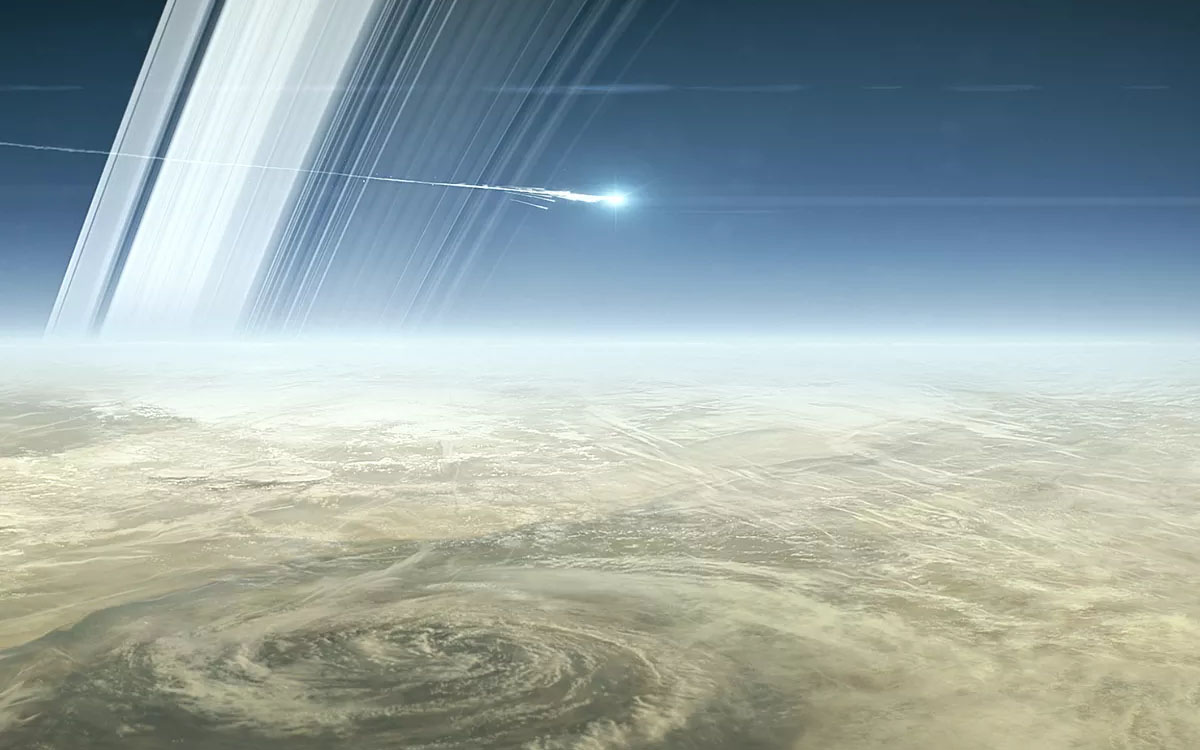why saturn’s majestic rings won’t be around for much longer

Saturn’s rings are iconic, so much as that we can say “the ringed planet” and fully expect that even little kids will instantly know what world we have in mind. But what if I were to tell you that those enormous, beautiful rings are actually a temporary feature that formed around a few hundred million years ago by still mysterious circumstances and will be a distant memory a few hundred million years from now? There’s no imminent cataclysm coming for them, nor will they suddenly vanish. They’ll just slowly but surely rain back down to Saturn until only their ghostly remnants are left to disperse in space, and we know this from measuring just how quickly that’s happening.
As charged particles from Saturn’s rings enter the planet’s atmosphere, they collide with hydrogen atoms, forming a molecule known as triatomic hydrogen, or H3+. According to recent observations, the quantities of this molecule floating in the upper layers of Saturn’s storms indicate that 1.5 tons of material are falling into the planet every second, and while we don’t yet know if that rate is constant, it does mean that the planet’s rings won’t last that much longer on planetary time scales. Meanwhile, another process seen by Cassini during its Grand Finale found that 11 tons of organic matter are falling towards the equator in the same time frame. That would be fast enough to deplete the majestic rings in just a little over 100 million years.
what created saturn’s rings and why are they falling into the planet?
We’ve suspected that the rings were not new since the Voyager flybys. Ancient rings that survived from the early days of the solar system would’ve been massive and dark, allowing for the trapped matter to rain down on the stormy planet below but retain enough mass to still exist. By contrast, Saturn’s rings were light, thin, and bright, a clear sign that they were relatively new, appearing roughly 100 million years ago. This was extremely odd because while collisions massive and energetic enough to create such rings were common 4 billion years ago, by the time the rings would’ve appeared, the solar system calmed down considerably.
Whatever created them was a one off incident and we might never know what it was, though a common hypothesis usually involves a collision between icy moons orbiting Saturn, either due to a rogue stellar body passing by, or perturbations from the sun. Since the planet has 62 known moons, that doesn’t seem completely unlikely. In the past it may have had moons to spare and if two of them were too close to each other and in less than stable orbits, a light nudge could well have caused a catastrophic collision. The rings’ composition of primarily water ice also supports this idea.
But again, we don’t know this for sure. What we do know is that the resulting rings, hit by solar winds and micrometeorites from the minute they stabilized, are becoming magnetically charged and pulled down by Saturn’s powerful magnetosphere. In the next 100 to 300 million years, depending on the exact rate of decay, they’ll start fading, then vanishing from the inside out until Saturn looks a lot like a beige, windier Jupiter. In other words, these rings were doomed from the moment they were born and we’re just lucky to be here while they’re still around.





